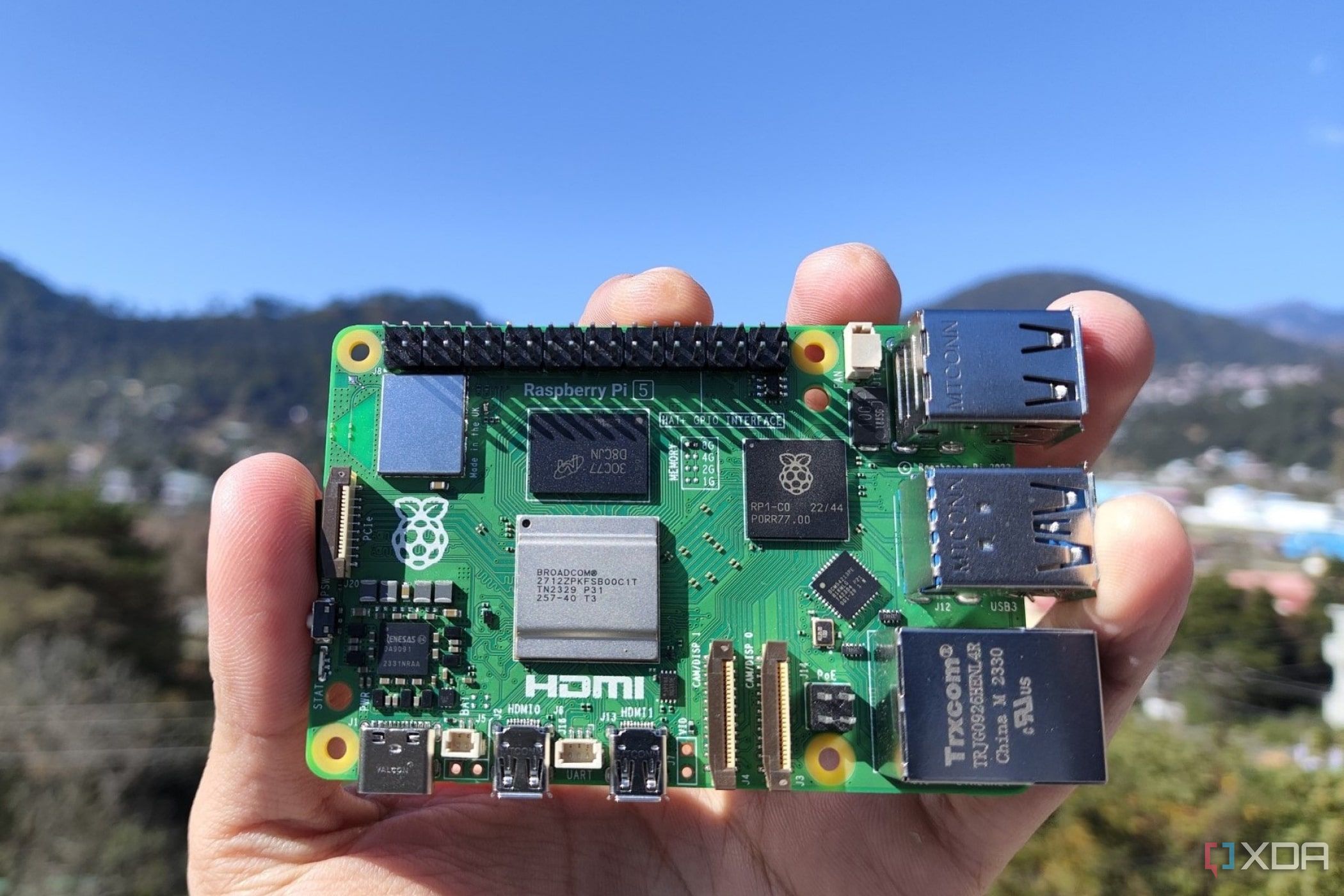How To Use Monitor Raspberry Pi Behind Firewall On Mac Without Breaking A Sweat
Listen up, folks. If you're here, chances are you've got a Raspberry Pi tucked away behind some firewall barriers and you're scratching your head trying to figure out how to monitor it from your trusty Mac. Well, let me tell ya, it's not as complicated as it sounds. Let's dive right into it, shall we? Monitoring a Raspberry Pi behind a firewall on a Mac is totally doable, and by the end of this article, you'll be a pro at it.
First things first, let's get one thing straight. Firewalls can be pesky little buggers, but they're there for a reason—security. They keep unwanted visitors out, but sometimes they can also block legitimate connections. So, if you're trying to keep tabs on your Raspberry Pi, you're gonna need to navigate through that firewall jungle. Don't worry, I've got your back.
Now, before we get into the nitty-gritty, let's talk about why this matters. Whether you're running a home automation setup or managing a server, keeping an eye on your Raspberry Pi is crucial. And doing it securely, behind a firewall, is the way to go. So, buckle up, because we're about to unravel the secrets of monitoring your Raspberry Pi from your Mac without all the headaches.
- Hunter Fieri Unveiling The Net Worth Of The Culinary Prodigy
- Rory Feek And New Wife Rebecca A Love Story
Understanding the Basics of Raspberry Pi Monitoring
Alright, so you've got your Raspberry Pi humming along behind a firewall, and you want to keep an eye on it. But where do you start? First off, you need to understand what monitoring actually entails. It's not just about checking if your Pi is on or off. No, no, no. It's about tracking performance metrics, resource usage, and ensuring everything is running smoothly.
Here's the deal: Your Raspberry Pi is like a little powerhouse, but it needs love and attention. Monitoring helps you catch issues before they become problems. Think of it as giving your Pi a regular check-up to make sure it's healthy and happy.
Why Monitor Raspberry Pi Behind a Firewall?
Now, you might be wondering, why go through the trouble of monitoring your Pi behind a firewall? Well, my friend, firewalls are like bouncers at a club. They keep the riff-raff out, but they can also make it tricky for you to access your own devices. By setting up proper monitoring, you ensure that you can check on your Pi whenever you want, without compromising security.
Here's a quick rundown of why monitoring behind a firewall is a good idea:
- Enhanced Security: Keeps prying eyes away from your Pi.
- Remote Access: Allows you to monitor your Pi from anywhere.
- Peace of Mind: Ensures your Pi is running as it should.
Setting Up Your Raspberry Pi for Monitoring
Before we dive into the specifics of monitoring your Pi from your Mac, let's talk about setting up your Pi for the task. This step is crucial because a well-configured Pi makes monitoring a breeze.
First, make sure your Raspberry Pi is up to date. Run those updates, install the latest software, and ensure everything is running smoothly. You don't want to start monitoring only to find out your Pi is lagging behind.
Configuring Your Firewall
Now, let's tackle the firewall. Firewalls are great for security, but they can be a pain when you're trying to access your devices remotely. The key is to configure your firewall properly so that it allows the right connections while still keeping everything secure.
Here's how you can configure your firewall:
- Identify the ports you need to open for monitoring.
- Set up rules to allow traffic from your Mac's IP address.
- Regularly review your firewall rules to ensure they're still secure.
Connecting Your Mac to Raspberry Pi Behind a Firewall
Okay, so you've got your Raspberry Pi all set up and your firewall configured. Now it's time to connect your Mac to your Pi. This part can seem daunting, but with the right tools, it's a piece of cake.
One of the easiest ways to connect is by using SSH (Secure Shell). SSH allows you to access your Pi remotely, which is perfect for monitoring. All you need is an SSH client on your Mac, and you're good to go.
Using SSH for Remote Access
SSH is like a secret handshake between your Mac and your Raspberry Pi. It allows you to securely connect to your Pi from anywhere. Here's how you can set it up:
- Enable SSH on your Raspberry Pi.
- Install an SSH client on your Mac, like Terminal.
- Use your Pi's local IP address to connect via SSH.
Tools for Monitoring Raspberry Pi from Mac
Now that you're connected, it's time to talk about the tools you can use to monitor your Raspberry Pi. There are plenty of options out there, so let's break them down.
1. htop
htop is a fantastic tool for monitoring CPU and memory usage on your Raspberry Pi. It gives you a clear, real-time view of what's going on inside your Pi. Plus, it's super easy to use.
2. vnstat
If you're concerned about network usage, vnstat is your go-to tool. It tracks bandwidth usage and provides detailed reports, so you can keep an eye on how much data your Pi is using.
3. pi-monitor
pi-monitor is a web-based tool that gives you a comprehensive overview of your Pi's performance. It's perfect for those who want a one-stop solution for monitoring.
Troubleshooting Common Issues
Let's face it, sometimes things don't go as planned. If you're having trouble monitoring your Raspberry Pi from your Mac, here are a few common issues and how to fix them.
1. Connection Refused
If you're getting a "connection refused" error, it could mean your firewall is blocking the connection. Double-check your firewall rules and make sure the necessary ports are open.
2. Incorrect IP Address
Make sure you're using the correct IP address for your Raspberry Pi. If you're unsure, you can use tools like nmap to scan your network and find your Pi's IP address.
Security Best Practices
Security should always be a top priority when monitoring your Raspberry Pi. Here are a few best practices to keep your setup secure:
- Use strong passwords for SSH access.
- Regularly update your Raspberry Pi's software.
- Monitor your firewall logs for suspicious activity.
Advanced Monitoring Techniques
Once you've got the basics down, you might want to explore some advanced monitoring techniques. These can help you get even more insight into your Raspberry Pi's performance.
1. Grafana
Grafana is a powerful tool for creating custom dashboards. You can use it to visualize data from your Pi and get a better understanding of its performance.
2. Prometheus
Prometheus is another great option for advanced monitoring. It allows you to set up alerts and get notified if something goes wrong with your Pi.
Conclusion
So there you have it, folks. Monitoring your Raspberry Pi behind a firewall on your Mac doesn't have to be a headache. With the right tools and a bit of know-how, you can keep tabs on your Pi and ensure it's running smoothly.
Here's a quick recap of what we've covered:
- Understand the basics of Raspberry Pi monitoring.
- Set up your Pi and configure your firewall properly.
- Use tools like SSH, htop, and vnstat for monitoring.
- Follow security best practices to keep your setup secure.
- Explore advanced monitoring techniques for even more insight.
Now, I want you to take action. Try out what you've learned, leave a comment if you have any questions, and share this article with your fellow tech enthusiasts. Happy monitoring, and may your Raspberry Pi adventures be smooth sailing!
Table of Contents
- Understanding the Basics of Raspberry Pi Monitoring
- Why Monitor Raspberry Pi Behind a Firewall?
- Setting Up Your Raspberry Pi for Monitoring
- Configuring Your Firewall
- Connecting Your Mac to Raspberry Pi Behind a Firewall
- Using SSH for Remote Access
- Tools for Monitoring Raspberry Pi from Mac
- Troubleshooting Common Issues
- Security Best Practices
- Advanced Monitoring Techniques



Detail Author:
- Name : Edythe McGlynn
- Username : edwina74
- Email : glover.lola@yahoo.com
- Birthdate : 1994-02-16
- Address : 184 Alessandra Stravenue Suite 684 Pagactown, HI 55704-9708
- Phone : 469-802-4808
- Company : Conn Inc
- Job : Logging Tractor Operator
- Bio : Laudantium odio qui distinctio nihil nemo pariatur. Voluptas laudantium quis eligendi.
Socials
facebook:
- url : https://facebook.com/luis_armstrong
- username : luis_armstrong
- bio : Nisi quos fuga qui aliquid. Nam autem culpa similique nobis.
- followers : 354
- following : 1901
tiktok:
- url : https://tiktok.com/@armstrong2021
- username : armstrong2021
- bio : Et officia beatae ducimus et magnam. Dolor vitae ut vel. Quod enim iste eos.
- followers : 2597
- following : 1615
instagram:
- url : https://instagram.com/luis_armstrong
- username : luis_armstrong
- bio : Sunt ut hic non quo. Qui officia quia nesciunt dolor consequatur. Quis nesciunt sed dicta a.
- followers : 2863
- following : 2790